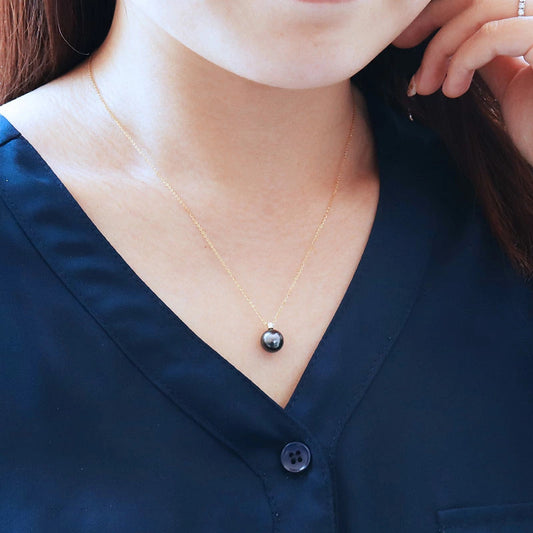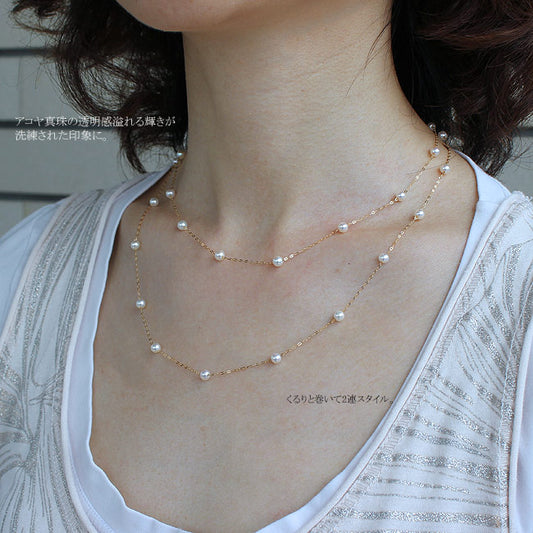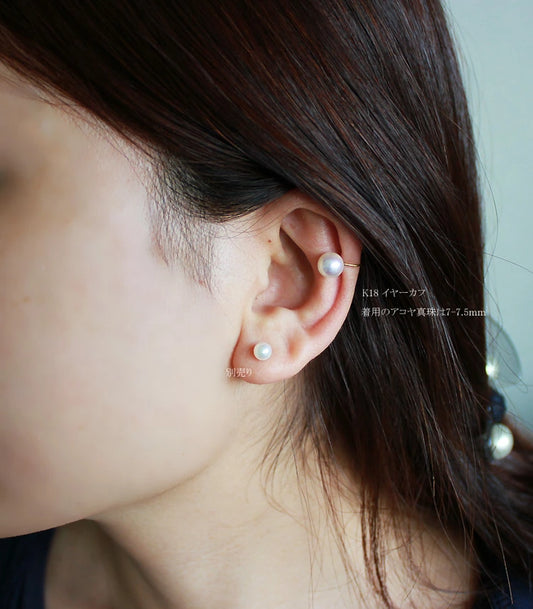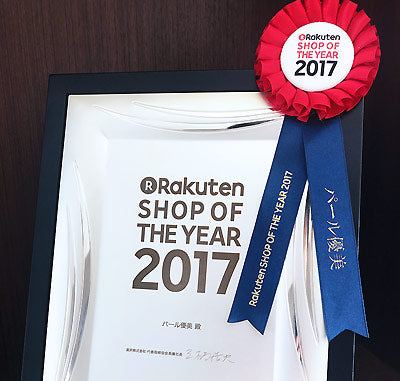
Rakuten Shop of the Year Awards
Received the "Rakuten Shop of the Year" award in 2017, which is given to approximately 100 stores selected from Rakuten Ichiba, which boasts over 50,000 stores. The best shop of the year is selected based on a comprehensive evaluation of user popularity votes and sales. It will be the first award-winning store in the pearl category and the only award-winning store in the pearl category.
Hanadama Pearl -HANADAMA-
We have a wide range of items from Hanadama Pearls to formal necklaces.
Collections
-
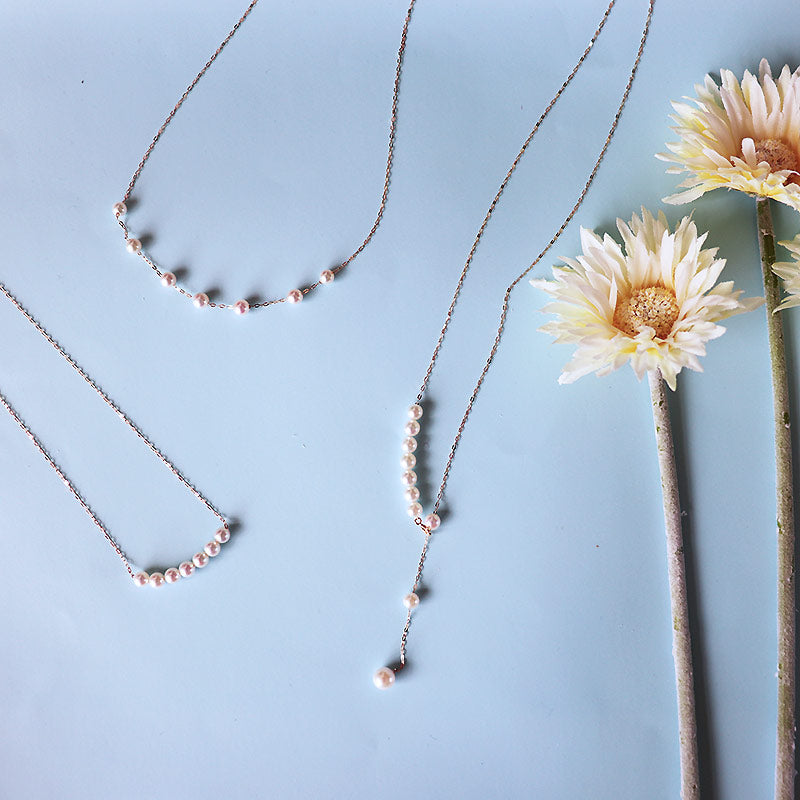
Pearl slide (patent)
[Patent number] Patent No. 6805455 If pearls can be freely moved and...
-
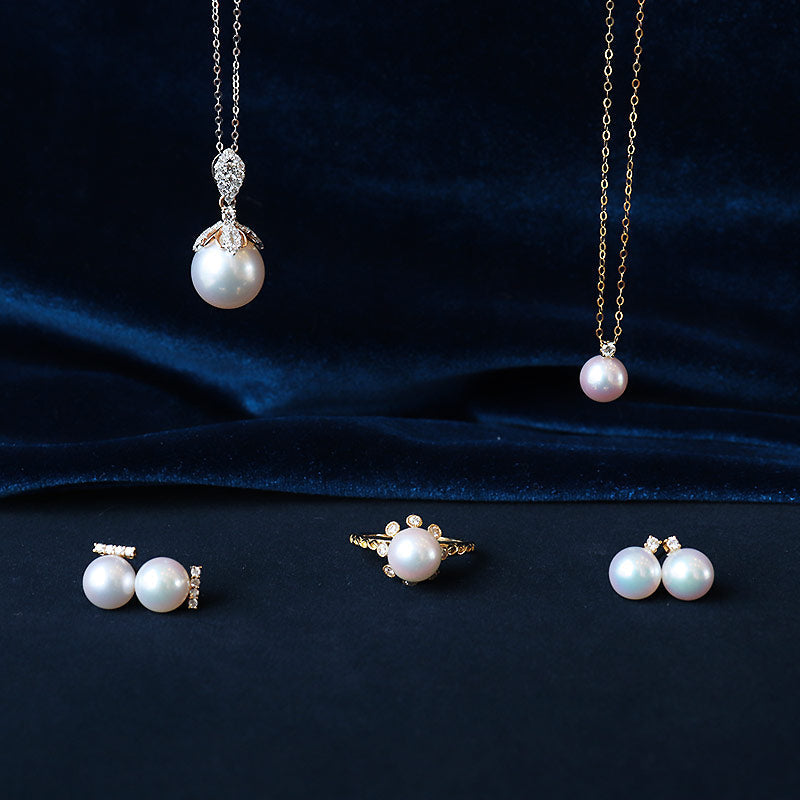
pearl diamond
The brilliance of the combination of pearls and diamonds has a synergistic...
-
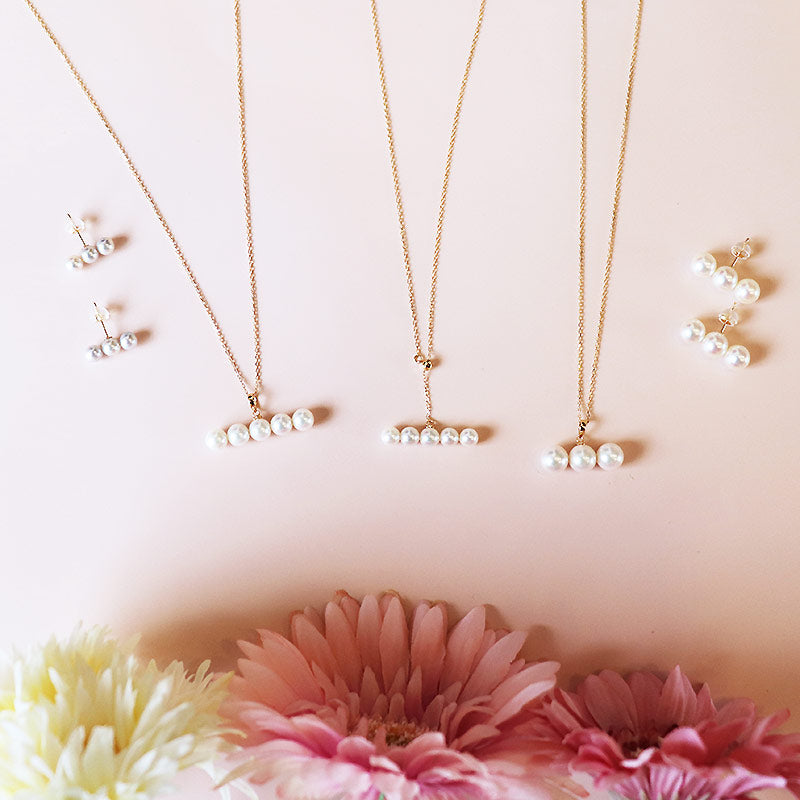
several grain lines
A few-grain line series that simply arranges pearls in a well-balanced manner....
-
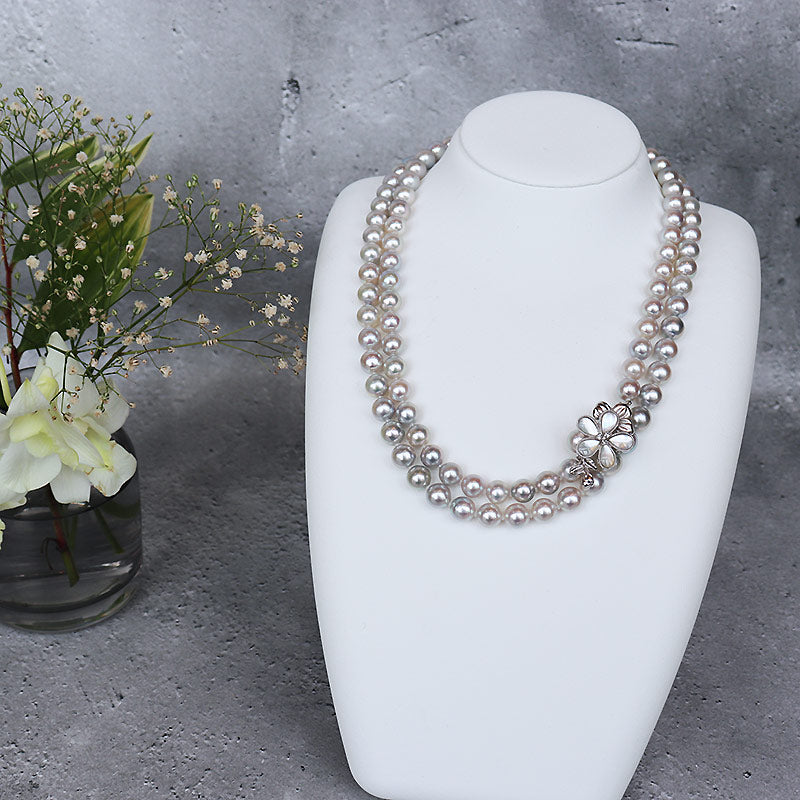
long necklace
Pearl long necklaces are one of the standard jewelry items. Akoya pearl...
-
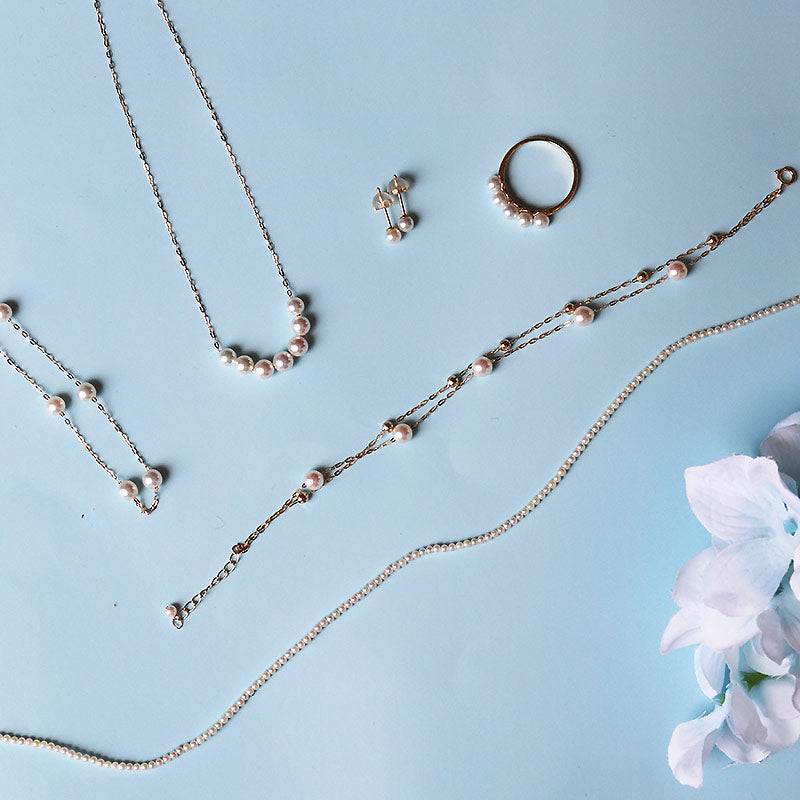
baby pearl
Akoya baby pearls are very small nuclei (2mm to 3mm) that are...
Pearl Slide (Patent No. 6805455)
Popular item
-
<tc>Akoya Pearl Necklace Baby Pearl K18YG [Patent Number] Patent No. 6805455 [Pearl Slide] Thru Necklace 4-5mm/6-7mm Mother's Day Gift Wedding Real Pearl Pearl Y-shaped Necklace</tc>
Distributeur :パール優美-Pearlyuumi-Prix habituel Du $219.52 USDPrix habituelPrix unitaire par -
Akoya pearl single diamond necklace K18YG or K18WG D0.04ct 1pcs pearl size selectable pearl diamond
Distributeur :パール優美-Pearlyuumi-Prix habituel Du $313.81 USDPrix habituelPrix unitaire par -
Akoya pearl single diamond earrings K18YG or K18WG D0.05ct 2pcs pearl size selectable pearl diamond
Distributeur :パール優美-Pearlyuumi-Prix habituel Du $271.90 USDPrix habituelPrix unitaire par -
Several grain line Akoya pearl earrings 7-7.5mm K18YGorK14WG earrings
Distributeur :パール優美-Pearlyuumi-Prix habituel Du $219.52 USDPrix habituelPrix unitaire par -
Akoya pearl bracelet baby pearl 4-5mm K18YG or K14WG rare size baby pearl station bracelet
Distributeur :パール優美-Pearlyuumi-Prix habituel $161.43 USDPrix habituelPrix unitaire par -
Akoya Pearl Baby Pearl Earrings [Akoya Pearl] [5.0-5.5mm Earrings Direct Connection K18YG or K14WG] [White Pink Baby Pearl]
Distributeur :パール優美-Pearlyuumi-Prix habituel $109.05 USDPrix habituelPrix unitaire par -
Several grain line Akoya pearl earrings 5-6mm baby pearl K18YGorK14WG earrings
Distributeur :パール優美-Pearlyuumi-Prix habituel $161.43 USDPrix habituelPrix unitaire par -
akoya [Akoya pearl] [Baby pearl] [Akoya pearl 5-6mm] [Bracelet] [White] Sea water pearl [Bargain price] [New product] [Product warranty] K18YG [Yellow gold]
Distributeur :パール優美-Pearlyuumi-Prix habituel $387.14 USDPrix habituelPrix unitaire par -
Akoya Pearl Formal Necklace [Akoya Pearl 6-7mm] [White Pink] Pearl Necklace [Bargain Price] [Total Length 42cm] Ceremonial Graduation Ceremony Entrance Ceremony Entrance Ceremony
Distributeur :パール優美-Pearlyuumi-Prix habituel $701.43 USDPrix habituelPrix unitaire par -
K18YG black butterfly pearl one DIA necklace diamond pearl diamond Tahitian pearl necklace D0.04ct 1pcs
Distributeur :パール優美-Pearlyuumi-Prix habituel $429.05 USDPrix habituelPrix unitaire par -
Akoya Pearl Long Necklace Baby Pearl Pearl K18YG Station Necklace
Distributeur :パール優美-Pearlyuumi-Prix habituel $481.43 USDPrix habituelPrix unitaire par -
Akoya pearl K18YG ear cuff You can choose the size of the pearl Great for your ears!
Distributeur :パール優美-Pearlyuumi-Prix habituel Du $124.76 USDPrix habituelPrix unitaire par
-
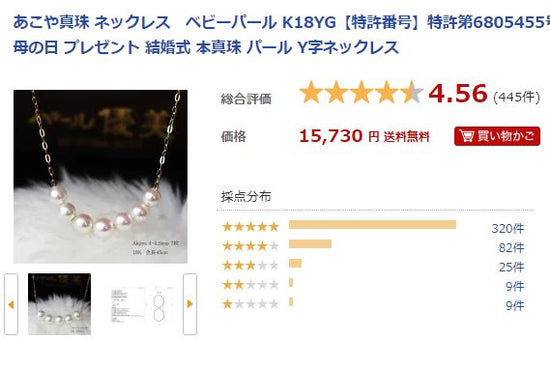
★★★★★
I highly recommend it. I bought the 7 grain type. I thought it was more than the price because the teri was strong and the grains were complete. The chain is thin and the pearls are small, so it's great for work and everyday use without being obtrusive. At work, I often wear it with simple black or navy tops, and I like it because it looks familiar. The chain sparkles casually, so I think it goes well with a jacket. It's also nice to be able to care for each pearl because you can move the position of the pearl. I'm glad I bought it, so I would definitely recommend it to anyone who is hesitant about buying it.
-

★★★★★
The pearls are beautiful! I was looking for an accessory that would go well with a pretty outfit, so I bought this. Arrived two weeks later, partly because I had the earrings changed. The pearls are glossy and beautiful, and I am very satisfied. It's an earring, so it's nice to be able to change it vertically and horizontally.
-
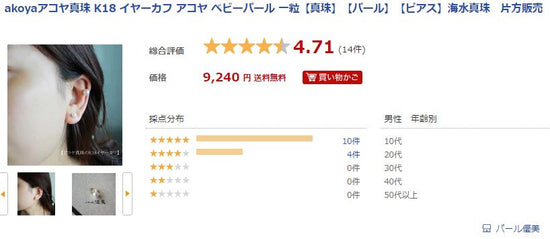
★★★★★
Aurora Pearl? It's made of good pearls that make you think, it's classy and cute. The
size is 7.5 to 8 mm, but it would have been better if it was used alone! ! Although I regretted it a little, it was just the right size because it was supposed to be layered with other ear cuffs.
I was hesitant about choosing a freshwater pearl ear cuff from another company, but I had purchased a different one here before, and I chose this product because the quality of Akoya pearls here is by far the best. It was good. -
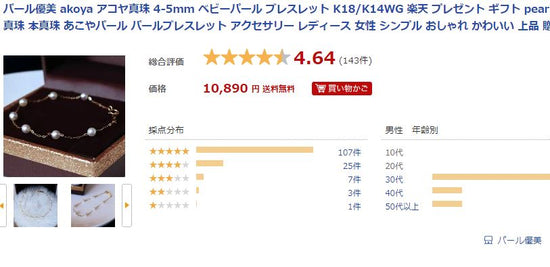
★★★★★
I wondered if there was a gold bracelet that was simple and didn't get in the way, and
arrived.
The decisive factor was the good reviews.
The pearls are really small, but they don't feel heavy
and don't get in the way.
7 grains at 18 cm. cute.
Pearl also has pink silver-like color and luster.
Small but beautiful.
Also, the chain is solid for the price.
And the glitter comes out very beautifully. The
watch and the bracelet I wear every day are silver, and the
marriage is gold, so I wanted something
that would serve as a bridge, so I am very satisfied.
It has become a daily staple. -
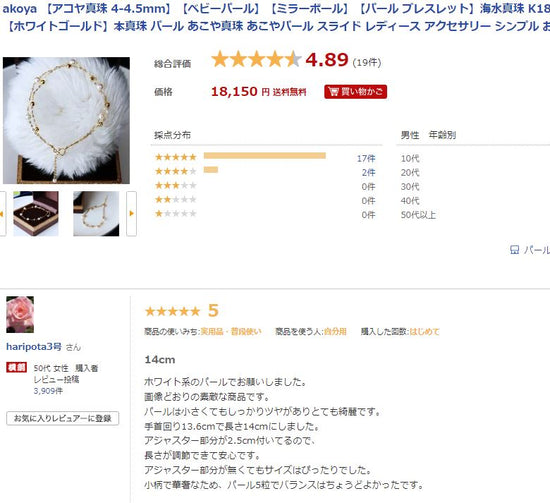
★★★★★
I asked for a white pearl. Nice product, just like the picture. Even though the pearls are small, they are glossy and very beautiful. The wrist circumference is 13.6 cm and the length is 14 cm. The adjuster part is 2.5 cm, so you can adjust the length for peace of mind. The size was perfect even without the adjuster part. I'm petite and delicate, so 5 pearls was just the right balance.
-
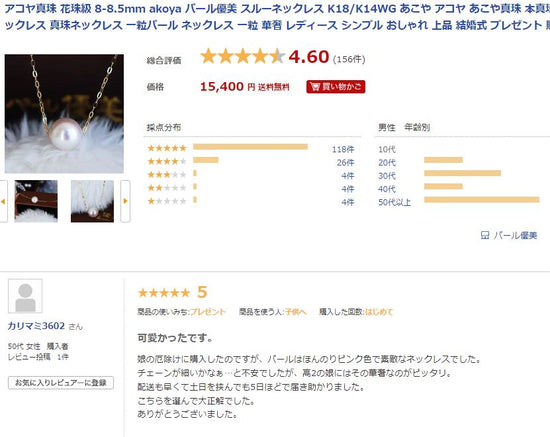
Column
It was cute. I bought it for my girlfriend's daughter, and the pearl was a nice pink necklace. I was worried that the chain would be too thin, but it was perfect for my high school sophomore daughter. The delivery was fast and it arrived in about 5 days even with Saturdays and Sundays, which was helpful. It was a great decision to choose this place. Thank you very much.
Thank you for your order.
We will deliver the goods with all our heart.

How to handle and care for pearls
Handling of pearls
1) Wearing pearls
First of all, pearls should be worn after dressing up. If you use lotion or perfume spray after wearing a pearl necklace, earrings, or ring, the liquid will come into contact with the pearls, which will damage the mother-of-pearl and absorb dust, etc., causing stains. It may adversely affect the quality of pearls. Please follow the rule of "Pearl last".
Next, check the pearls before wearing. As for the necklace, pick up one side of the clasp and let him hang it down like a string.
If there is a gap of more than one bead in the thread, it is evidence that the thread is stretched considerably. It is necessary to change the thread so that the thread does not break. Also check the condition of the beads. In particular, examine the beads near the ends, which always come directly into contact with the neck. Are there pearls damaged by sweat? Since the center of the necklace rarely touches the skin directly, it is less likely to get damaged, but the ends of the necklace come into direct contact with the back of the neck, and are often damaged by sweat, so please be careful. . Please check
the clasp at the same time as checking
the necklace. Even if the clasp comes off and the necklace slips down, you may not notice it in a crowd or on the floor where there is no sound. Similarly, check the clasp when wearing the brooch.
In the case of rings and earrings, please check if the beads are firmly attached to the base. Be careful if the pearl seems to be wobbly. Normally, pearls are glued to the core rod of the stand with a two-component adhesive, but the bonding strength varies depending on the bonding conditions. Also, the hole drilled in the pearl may be shallow or the diameter of the core rod may differ from the hole diameter, so the adhesion may be weak. Be especially careful with rings with several small pearls. If you notice any of these problems
, stop wearing them and have them repaired at a specialty store as soon as possible. For broaches and necklaces that use many pearls, it can take months to repair even a single lost pearl because it is difficult to replace with the same quality.
When wearing pearls, be careful not to hit them against hard objects.
When getting in and out of a car or entering or exiting a building, pearls often hit hard objects. Also, be careful about what you eat and drink at parties and dinners. There have been cases where part of a necklace has fallen into a container containing juice, and the juice's pigment has adhered to the pearl, discoloring it. Avoid acidic foods such as vinegar and lemon juice. These can damage the pearls.
2) Storage of pearls
The keyword when storing pearls is "avoid". Do not expose pearls to extremely abnormal environments such as strong light, heat, acid, or humidity. Also, when storing jewelry in a jewelry box, separate it from other hard jewelry, or put jewelry in a plastic bag or wrap it in cloth to avoid direct contact. Instead of keeping it in storage for the whole time, take it out from time to time and give it a light polish.
3) Taking care of pearls
"Immediately" is the key word in taking care of pearls. When putting away the pearls you were wearing, take good care of them. Are you still sweating? Is it dirty? Are there any new scratches or discoloration? Is the string of the necklace loose? Are the beads of your earrings or rings coming off or wobbly? Wipe off sweat immediately with a soft cloth.
If you find something wrong with the pearl, such as a rough surface, do not leave it as it is. There are pamphlets that often advise you to wash pearls if they get dirty, but if possible, it is better not to do your own maintenance.
With a little care like this, you can extend the life of your pearls.
About pearls

Kokichi Mikimoto
Born January 25, 1858 in Toba, Mie Prefecture. He started pearl farming around 1890, and finally succeeded in culturing semi-circular pearls in 1893. After that, he overcame many hardships and developed cultured pearls as his jewelry industry, which is too famous. He is a person who has made a fortune by cultivating pearls and branding them. He is the founder of Mikimoto Pearl Shop (now Mikimoto ). He was also called Mikimoto Pearl, King of Pearls.

pearl oyster
(Akoya pearl oyster,
Pinctada fucata)
A marine bivalve that produces Akoya pearls, the origin of cultured pearls. The same species is widely distributed from the Indian Ocean to the western Pacific Ocean. In Japan, the northern limit is said to be the Boso Peninsula on the Pacific Ocean side and the Oga Peninsula on the Sea of Japan side. The inner surface of the shell has a very beautiful iridescent luster.

White lipped pearl oyster
(Silver/Gold-lipped pearl oyster,
Pinctada maxima)
A large marine bivalve that inhabits the Indian Ocean centered on the equator from Amami Oshima to the south, and the Southwest Pacific Ocean. They are called silver lip and gold lip due to the difference in color of the rim of the mother-of-pearl. It is the largest shellfish used for pearl farming, and most of the cultured pearls are large pearls of 10 mm or more.

Black-lipped pearl oyster
(Black-lipped pearl oyster,
Pinctada margaritifera)
This is the second largest pearl cultured mother oyster after white lipped pearl oyster. In Japan, it lives south of the Kii Peninsula. In the world, its habitat ranges from Taiwan to the West Indian Ocean, the Persian Gulf, the Red Sea, the South Pacific (Micronesia and Polynesia) to the Gulf of California and the Gulf of Panama.

Mabe
(Black-winged pearl oyster,
Pteria penguin)
A large marine bivalve with a distinctive shape like an eboshi. Widely distributed in the Pacific Ocean and Indian Ocean waters south of Amami Oshima. Since ancient times, attempts have been made to cultivate pearls using this type of shellfish, but it was difficult to cultivate perfectly round pearls, and half-shaped pearls were mainly used.

Hyriopsis cumingi
(Hyriopsis cumingi)
A large freshwater bivalve that inhabits the rivers and marshes of China. A close species of Hyriopsis schlegeli that lives in Lake Biwa, Japan. In China, a large amount of mother oysters are produced by artificial seedlings and used for freshwater pearl farming. In China, it is called "Triangular Fan Pass".

Conch pearls
Natural pearls produced from binkugai. It has a special cross-plate structure that is different from the normal pearl structure. There are many oval types. It is characterized by a red color derived from carotenoid pigments and a flame structure.
●How pearls are made

Pearl oyster soft body
The soft body contains various organs such as the heart, carp, adductor muscle, mantle, and gonads. Of these, the mantle and gonads are essential for pearl farming. From the mantle, small pieces of cells called "pieces" are cut out and transplanted into the gonads along with the nucleus to form pearls.
Piece
A cell fragment cut from the epithelial cells on the outer surface of the mantle, usually about 2 mm square. The pieces are transplanted into the pearl oyster body together with the nucleus, proliferate to form a pearl sac, and secrete nacre to produce pearls.Recent research has shown that the properties of the pieces are greatly related to the color of the pearls, and the characteristics of the oysters from which the pieces are cut are emphasized
Artificial Seedling
Artificially fertilizing male and female shells to create and nurture juvenile shells. In pearl oysters, seed oysters are usually reared from late December, and after they have matured sufficiently, sperm and eggs are extracted from the gonads in late January of the following year and fertilized. grow until After that, they are taken out to sea for farming. Parent oysters are carefully selected to produce excellent mother oysters. Recently, various biotechnologies have been introduced, such as investigating the characteristics of the mother shellfish at the genetic level and cryopreserving sperm.
Natural Seedling Collection
Collecting young oysters that have been naturally fertilized and raised in the sea and growing them into pearl oysters. In the case of Japanese pearl oysters, the young oysters that are newly born from early spring to early summer enter an adhering life. Aiming at this time of year, sticks such as cedar leaves are soaked in the sea, and juvenile shells are attached and collected.

Nucleus insertion surgery
It is no exaggeration to say that the quality of the pearls produced is largely determined by the skill of the surgery, which is the most important step in pearl cultivation. It is astonishing that the technique of transplanting living tissues called pieces was established more than 100 years ago.

Cultivation Management
Mother tools that have undergone nucleus implantation surgery are cultivated in earnest, but the method of managing mother oysters during the culturing period also has a large impact on the quality of the resulting pearl, just like nucleus implantation surgery. . Recently, efforts have been made day and night to scientifically understand the physiological characteristics of mother oysters and the environment of fishing grounds to produce high-quality pearls.

Hamagage
Harvesting pearls from cultured pearl oysters. It is also called "Hamaage". Beached pearls are called hamaageju. In the case of Japanese Akoya pearls, beach-age is carried out from December to February of the following year, when the color and luster improves. After culturing, the mother oysters are transported to land for pearl collection, and are hauled off the beach. Farmers carry out the hamaage with anticipation and anxiety in their hearts, wondering what kind of results their daily efforts will bring to Tama.

Akoya Pearl Farm (Japan)
Akoya pearl farming was once practiced in Kanagawa prefecture on the Pacific Ocean side and 24 prefectures west of Ishikawa prefecture on the Sea of Japan side. Nagasaki, Kumamoto, and Oita prefectures are the main prefectures.

Pearl Selection
Pearl selection is based on quality such as shape, winding, flaws, luster, and color.

Pearl drilling
Drilling includes double drilling for continuous use and single drilling for crafting.

string
On a rectangular wooden tray with grooves called rendai, double-hole beads are lined up according to quality such as size, shape, winding, scratches, and color, and threaded to make a single necklace. ¡The quality of the pearls is aligned on the ream stand to make one ream. Very skilled technique is required.
●Pearl Shapes
Even if a round nucleus is put into a mother oyster, the resulting pearls come in various shapes such as round, semi-round
, drop, and baroque. be done.
There is not much research
as to why these different shapes are possible


●Pearl Color
The color of pearls varies depending on light interference, pigments, and organic matter.
gradient

A necklace in which the largest pearl is placed in the center and the pearls are symmetrically arranged so that the size gradually decreases from there. In the case of Akoya pearls, there are types such as 2.5, 3.5, 5, and 8 types, depending on the size, length, and weight of the pearl.
uniform
Necklaces of nearly equal size, strung together with beads within 0.5mm in size. There are various names depending on the length.
Pearl necklace length
Necklaces (uniforms) are called by various names depending on their length.
●Choker ①: 14 inches (approximately 35 cm).
The perfect length for your neck.
●Princess: 16 inches (approximately 40 cm) to 17 inches
(approximately 43 cm).
● Matinee ②: 21 inches (approximately 53 cm).
1.5 times longer than a choker.
● Opera ③: 28 inches (about 71 cm).
Originally for evening parties.
● Rope ④: 42 inches (approximately 107 cm).
Three times the length of a choker.
mother of pearl

A layer of crystals of calcium carbonate called aragonite and hard proteins called conchiolin that are stacked in parallel like the bricks and cement of a brick wall.
winding

nacre thickness. The standard for winding differs depending on the type of mother shellfish. Rolls are generally related to the cultivation period, and the longer the cultivation period, the thicker the rolls tend to be. Soft X-rays are often used to measure windings non-destructively.
Terri
Teri The quality of light reflected by pearls is called teri. The quality of a pearl's luster is determined by the pearl's surface structure and internal structure (thickness, uniformity, light transmission, etc.). When the surface of the pearl has a smooth surface without irregular reflection of light, and the beautiful large and thin aragonite crystals are piled up regularly to form the nacreous layer, the effects of light reflection, refraction, interference, etc. Terry is born.
Hanadama
Cultured pearls generally refer to high-quality cultured pearls with few flaws, good shape, curls, luster, and color, but there are no clear standards. Almost 90% of the mussels die during the cultivation period after the nucleus insertion surgery. The reasons for this are physical exhaustion, the shock of surgery, and damage from red tides, typhoons, and infectious diseases. The remaining 20% or so of shells are of low quality and have no value as jewelry. The last 30% of oysters produce quality pearls. Among the good quality pearls, only 10% are the highest quality pearls called “hanadama.”
Bleaching
Bleaching the pigments and organic substances called "blemishes" contained in the pearls, mainly using an oxidizing agent such as hydrogen oxide, to bring out the beauty of the pearls.
It is said that the bleaching of pearls was inspired by the use of oxyflu in coral bleaching in Italy.
Non-nuclear cultured pearl
A pearl cultured by inserting only a piece into the mother shell. It is called nucleusless because it does not use a solid nucleus. Most freshwater cultured pearls are nucleus-free.Pearls artificially manufactured to imitate the appearance, color and other characteristics of natural or cultured pearls Whether or not they have the same physical and chemical characteristics as natural or cultured pearls It doesn't matter.
Nucleated cultured pearl
A pearl cultured by inserting a nucleus and pieces into a mother shellfish. Almost all marine cultured pearls are nucleated. A small number of cultured freshwater pearls also contain nucleated pearls.
Akoya pearl
A pearl cultured with pearl oysters. The size is about 2 to 10 mm, and 6 to 7 mm is common. Large beads of 8 mm or more are extremely rare. Many of them have a unique interference color. Besides Japan, Akoya pearls are also cultivated in China and Vietnam.
Black Butterfly Pearl
A pearl cultured with Black Butterfly Shell. In the 1970s, Ishigaki Island in Okinawa was the main production area, but in the 1980s Tahiti began mass production, and now most of it is produced in Tahiti. In the past, most pearls were 10 mm or more, but recently they have increased by 8 to 9 mm. As for the color, the reddish green-black called "peacock" is the most preferred
. In addition to this, there is a wide range of colors such as black, gray, green, red, white and blue.
white butterfly pearl
Pearl cultured with white mussels. It is also called "South Sea Pearl". Most of them are 10 mm or more in size, but recently 8 and 9 mm ones are increasing. White pearls include white pearls called "silver-lipped" pearls cultured in shellfish, and cream-golden pearls called "gold-lipped" pearls cultured in shellfish. White butterfly pearls are mainly farmed in Australia, Indonesia and the Philippines. Recently, it is also farmed in Myanmar and Japan.
Freshwater pearls
Pearls cultured with Ikechogai in Japan and Triangular oysters in China. Recently, there are very few products made in Japan, and most of them are made in China. Most freshwater cultured pearls are nucleusless, so they come in a wide variety of shapes.
The three basic colors are white, orange, and purple, and these are mixed to create a variety of colors. The size ranges from 2 mm to 10 mm or more, and the width is wide.
Cultured pearls
Cultivated pearls that are formed in the body of a living mollusk due to artificial factors, and whose entire visible surface is covered with nacre. Artificial intervention within the concrete only gives the opportunity for the formation of pearls, and the formation is only natural products produced within the concrete. Cultured pearls are categorized into
cultured pearls and semi-circular cultured pearls according to their formation mechanism and characteristics.
Hemispherical pearl
A pearl cultured by inserting a hemispherical nucleus into the inner nacre layer of a pearl oyster shell. After culturing, the core is removed and filled with resin or the like. Since mabe-cultured pearls are famous, half-shaped pearls cultured in white-lipped oysters, black-lipped oysters, and abalone are often called 'mabe'. It used to be called "half-round pearl" or "radius pearl", but now it is unified as "half-shaped pearl".
Natural pearls
A metabolite formed in the body of a living shellfish without any artificial factors, and whose visible parts are equivalent to shells. Say. Natural pearls can be divided into those with a nacreous structure and those with other structures (eg cross-plate structure).
Poppy
Non-nucleated seawater pearls harvested as a by-product of cultured pearls Keshi used to refer to small non-nucleated pearls harvested from Akoya oysters, but today it also includes large non-nucleated pearls harvested from white and black oysters. called poppies.
Momme
An ancient Japanese unit of weight for measuring the weight of pearls. Momme = 3.75g. Since cultured pearls originated in Japan, the momme (monme) is still an exception and is accepted as a unit of weight.
.
Regarding delivery
The delivery method will be Yamato Transport. The shipping fee will be 650 yen (excluding tax) nationwide except for some areas. However, only Hokkaido and Okinawa will be 1,450 yen (excluding tax).
If you purchase more than 10,000 yen in total, shipping will be free.
Share

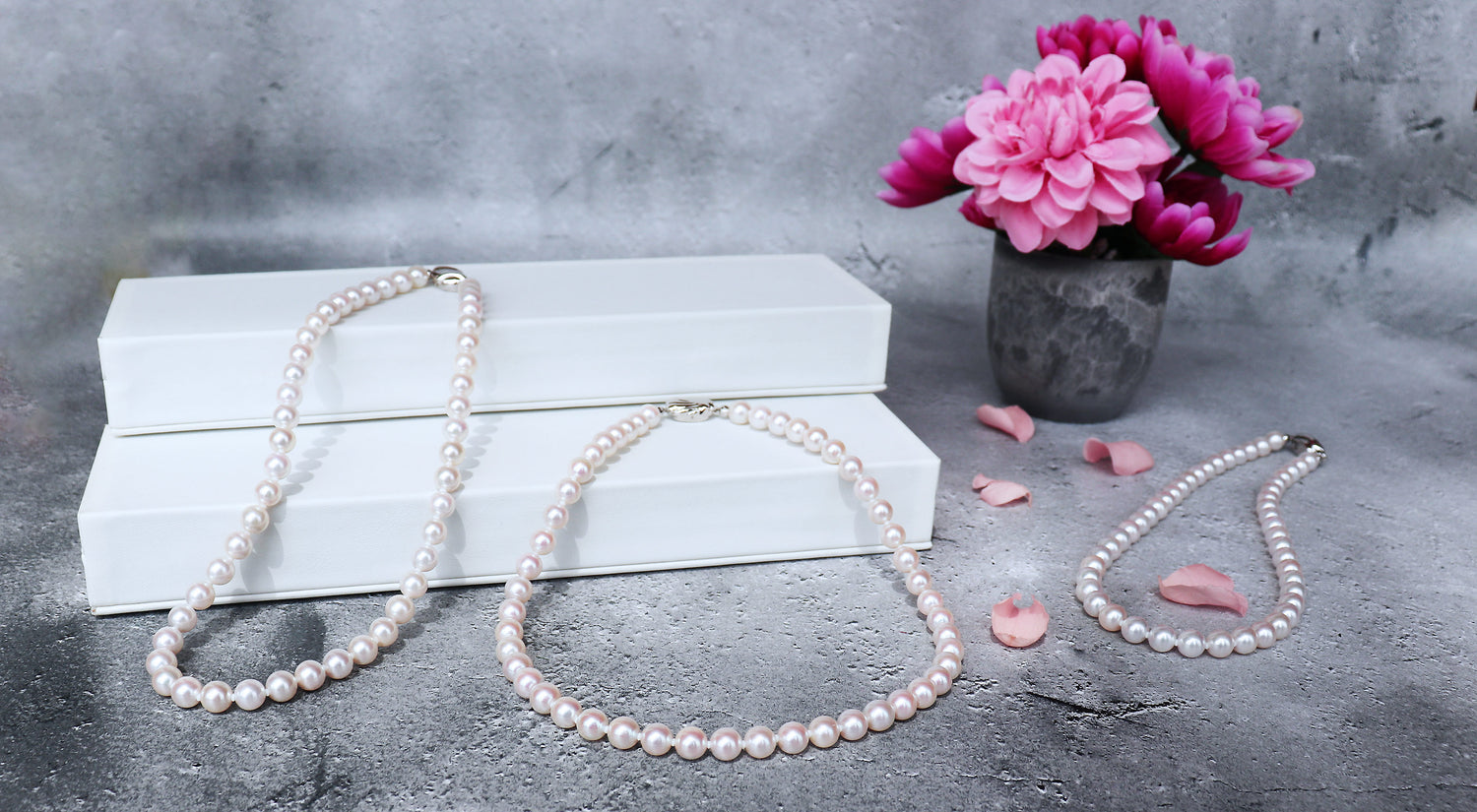
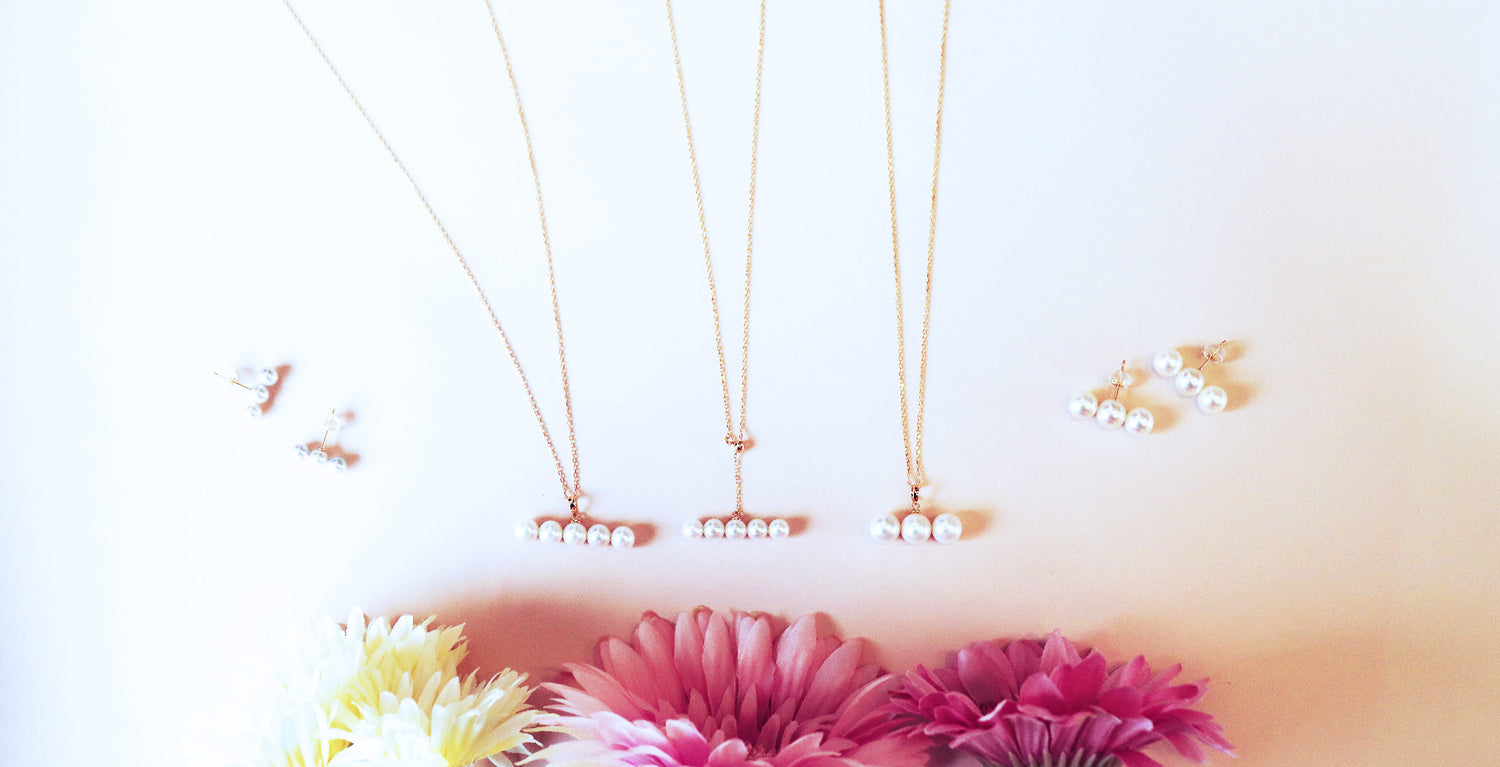
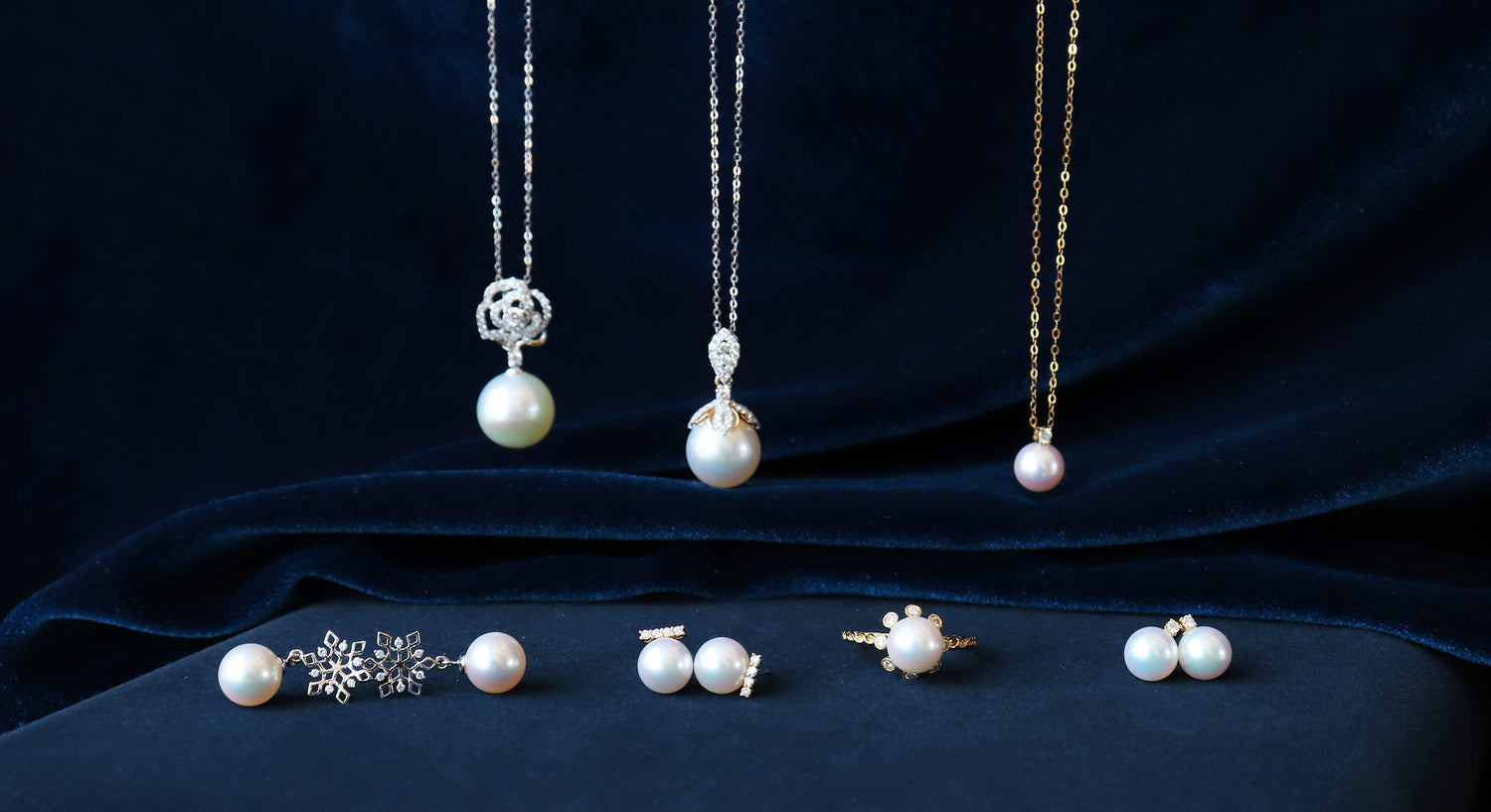
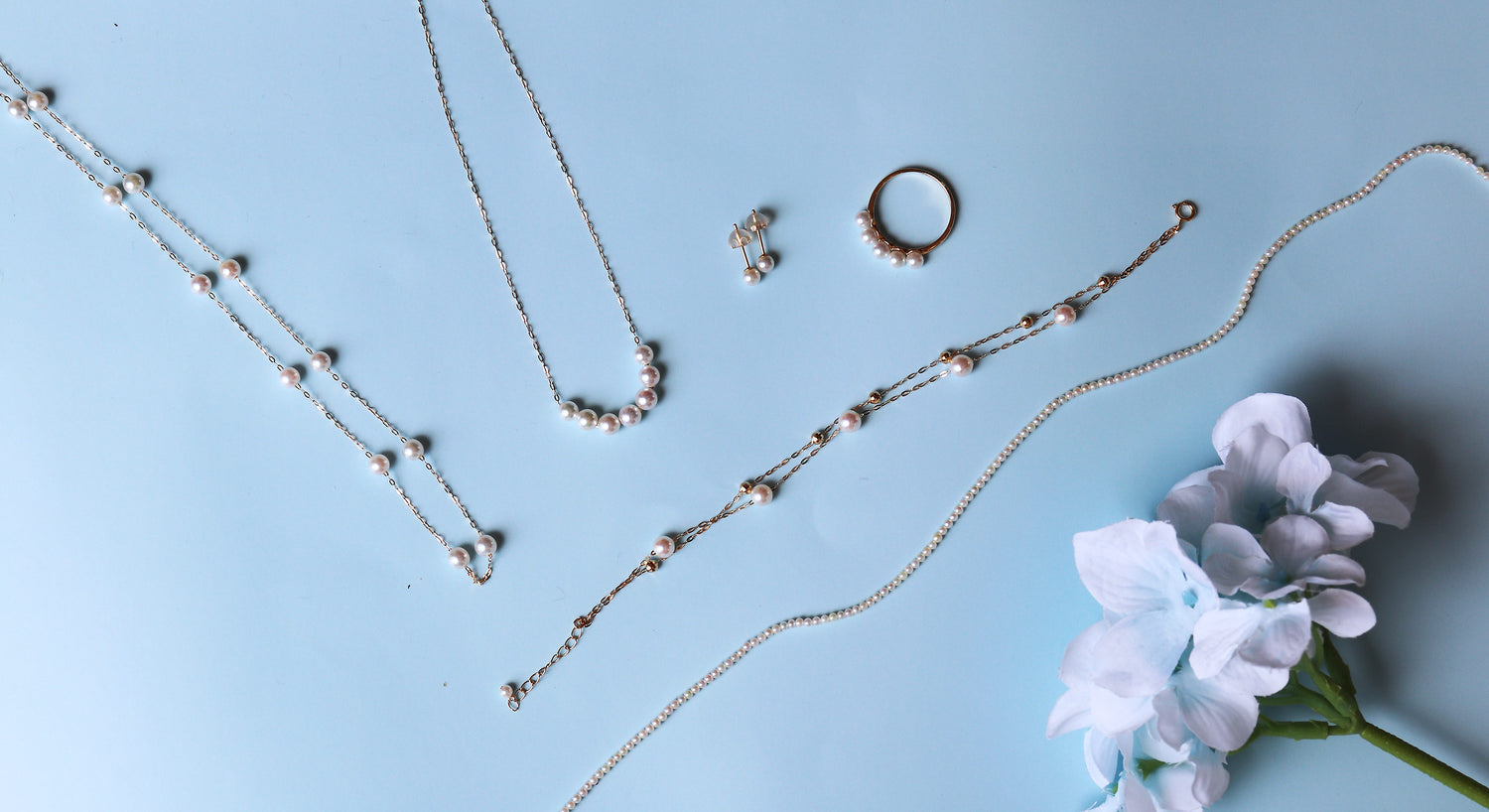
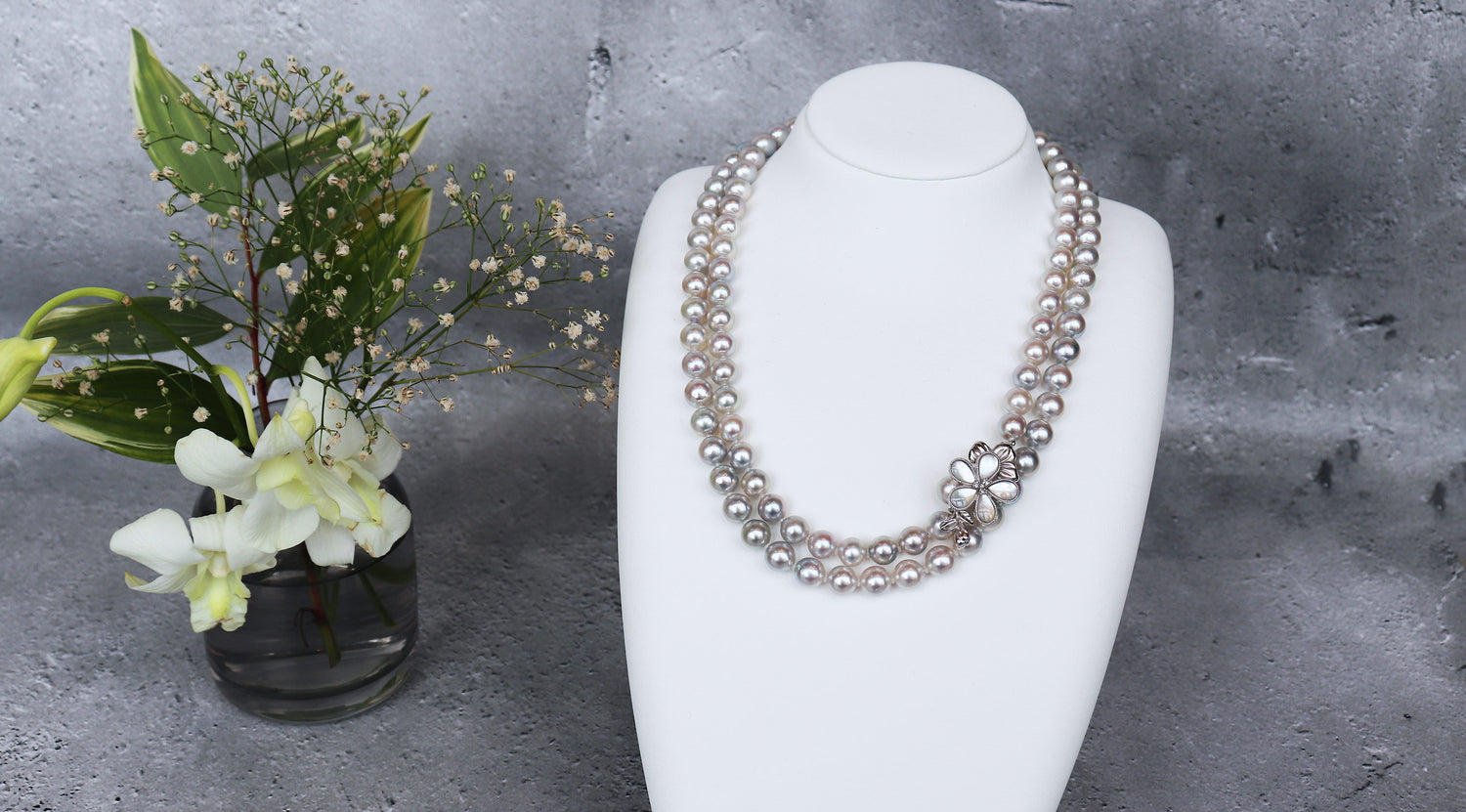

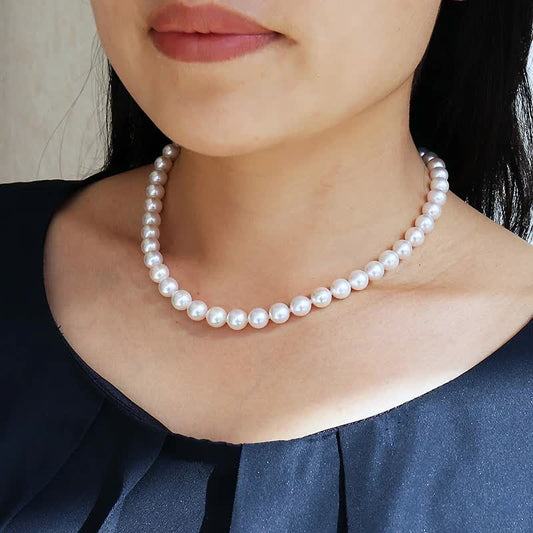

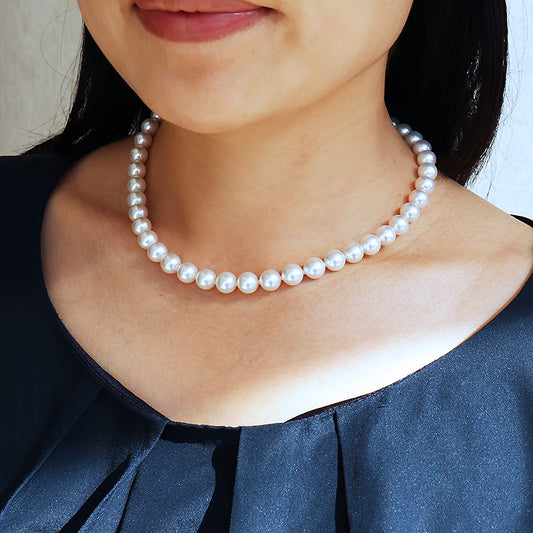

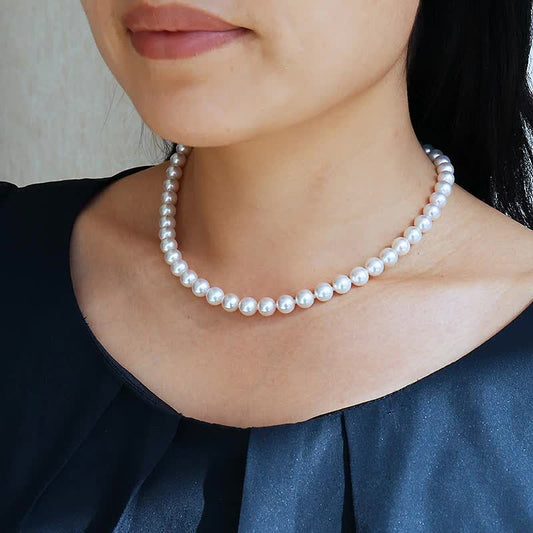

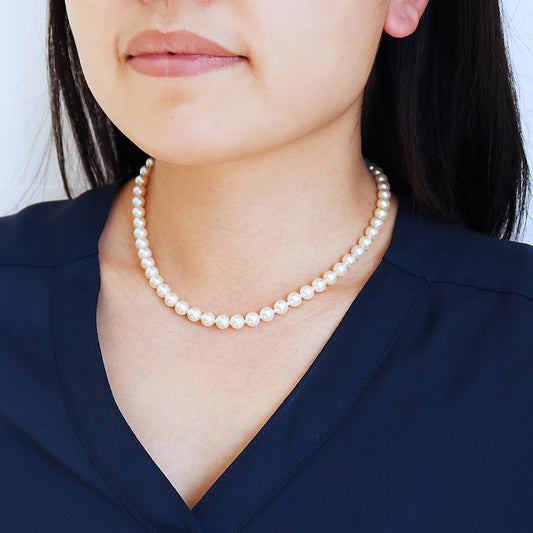


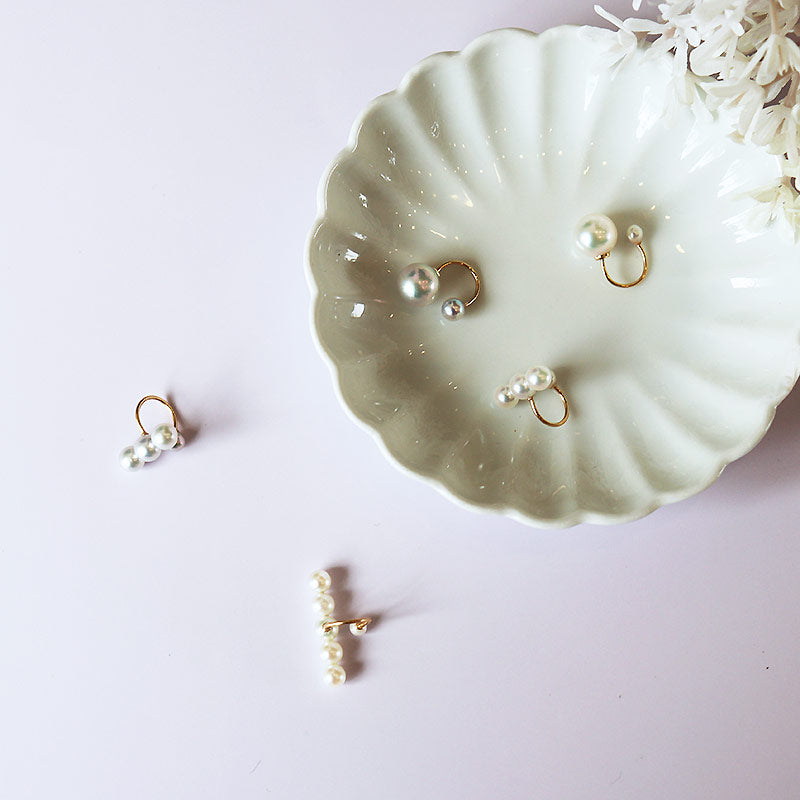

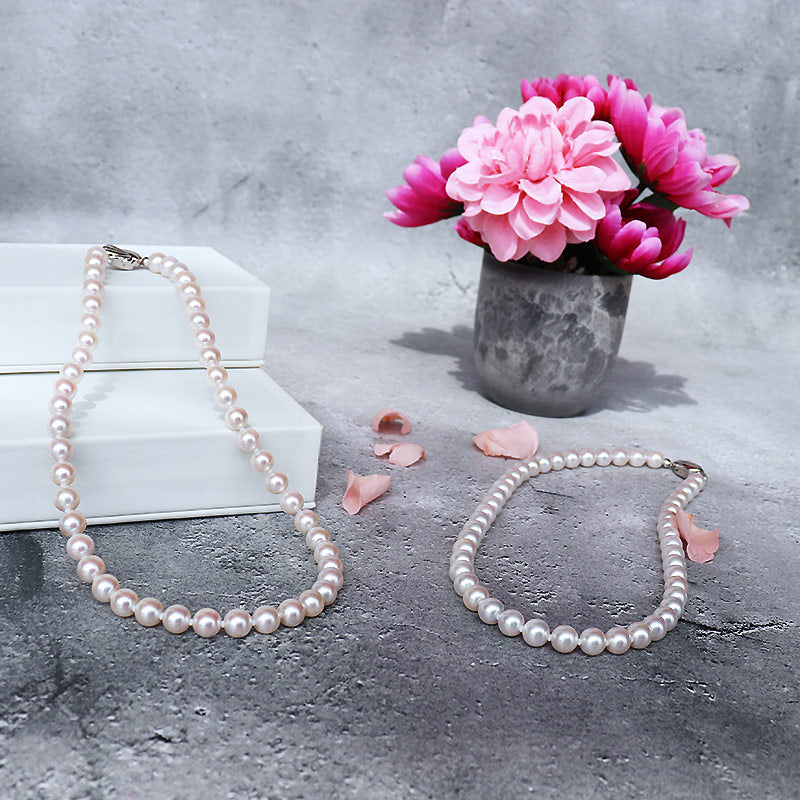



![<tc>Akoya Pearl Necklace Baby Pearl K18YG [Patent Number] Patent No. 6805455 [Pearl Slide] Thru Necklace 4-5mm/6-7mm Mother's Day Gift Wedding Real Pearl Pearl Y-shaped Necklace</tc>](http://pearlyuumi.net/cdn/shop/products/4651.jpg?v=1654151547&width=533)
![<tc>Akoya Pearl Necklace Baby Pearl K18YG [Patent Number] Patent No. 6805455 [Pearl Slide] Thru Necklace 4-5mm/6-7mm Mother's Day Gift Wedding Real Pearl Pearl Y-shaped Necklace</tc>](http://pearlyuumi.net/cdn/shop/products/4651_11.jpg?v=1654151568&width=533)

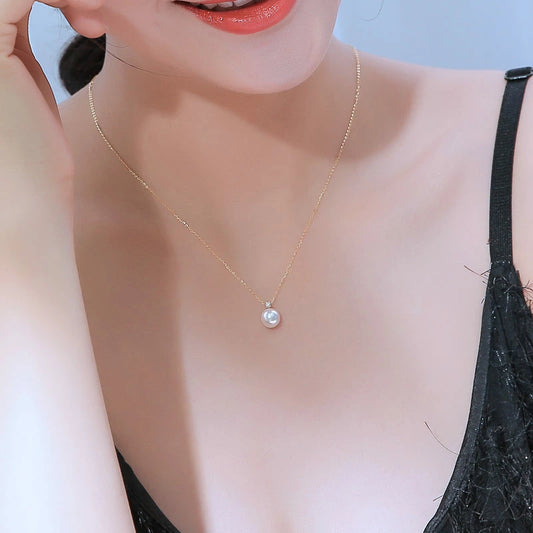

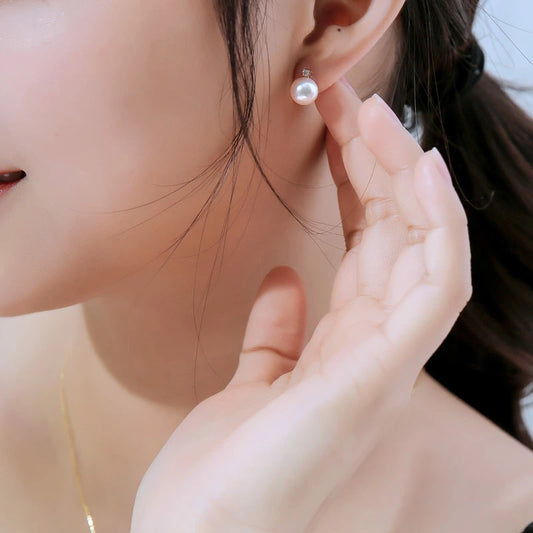

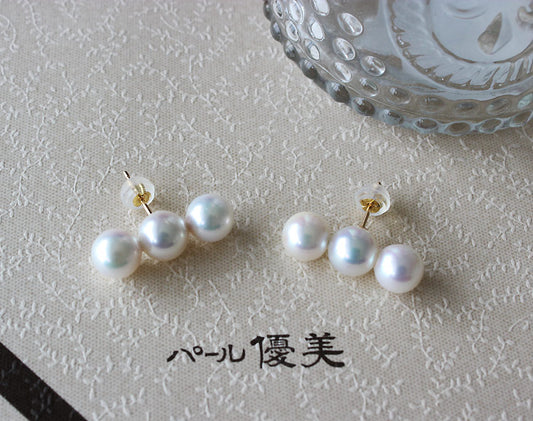

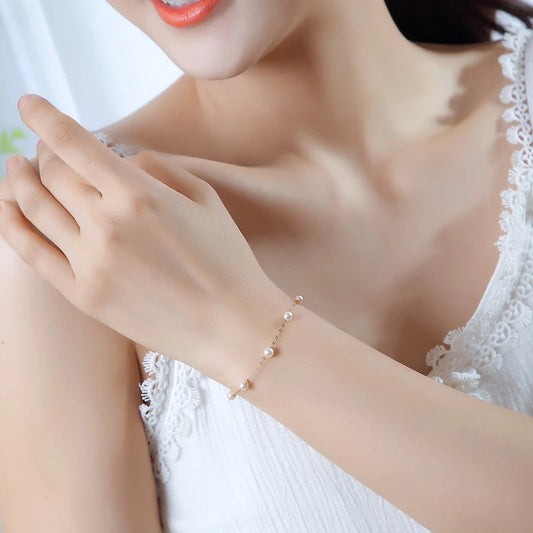
![Akoya Pearl Baby Pearl Earrings [Akoya Pearl] [5.0-5.5mm Earrings Direct Connection K18YG or K14WG] [White Pink Baby Pearl]](http://pearlyuumi.net/cdn/shop/products/6661-2_00.jpg?v=1649582111&width=533)
![Akoya Pearl Baby Pearl Earrings [Akoya Pearl] [5.0-5.5mm Earrings Direct Connection K18YG or K14WG] [White Pink Baby Pearl]](http://pearlyuumi.net/cdn/shop/products/6661-2_01.jpg?v=1649582111&width=533)

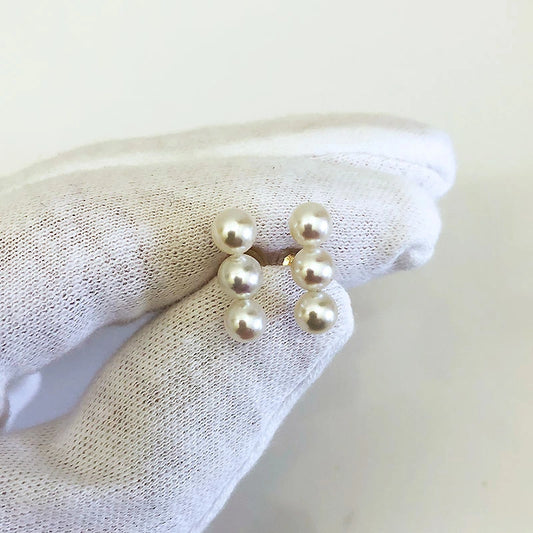
![akoya [Akoya pearl] [Baby pearl] [Akoya pearl 5-6mm] [Bracelet] [White] Sea water pearl [Bargain price] [New product] [Product warranty] K18YG [Yellow gold]](http://pearlyuumi.net/cdn/shop/products/10772_000.jpg?v=1659492383&width=533)
![akoya [Akoya pearl] [Baby pearl] [Akoya pearl 5-6mm] [Bracelet] [White] Sea water pearl [Bargain price] [New product] [Product warranty] K18YG [Yellow gold]](http://pearlyuumi.net/cdn/shop/products/10772_001.jpg?v=1659492383&width=533)
![Akoya Pearl Formal Necklace [Akoya Pearl 6-7mm] [White Pink] Pearl Necklace [Bargain Price] [Total Length 42cm] Ceremonial Graduation Ceremony Entrance Ceremony Entrance Ceremony](http://pearlyuumi.net/cdn/shop/products/11982_00.jpg?v=1649837985&width=533)
![Akoya Pearl Formal Necklace [Akoya Pearl 6-7mm] [White Pink] Pearl Necklace [Bargain Price] [Total Length 42cm] Ceremonial Graduation Ceremony Entrance Ceremony Entrance Ceremony](http://pearlyuumi.net/cdn/shop/products/11982_09.jpg?v=1649838032&width=533)

